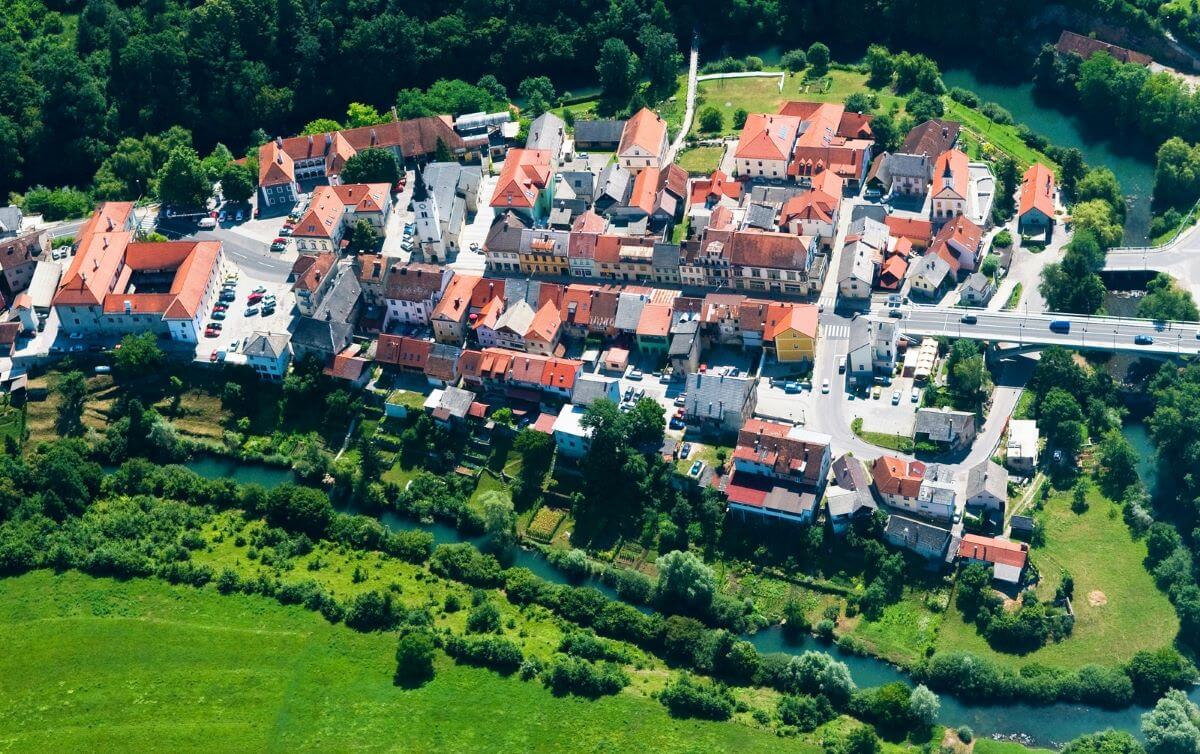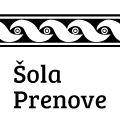TIC Črnomelj
What to see in this city?
Get to know the city
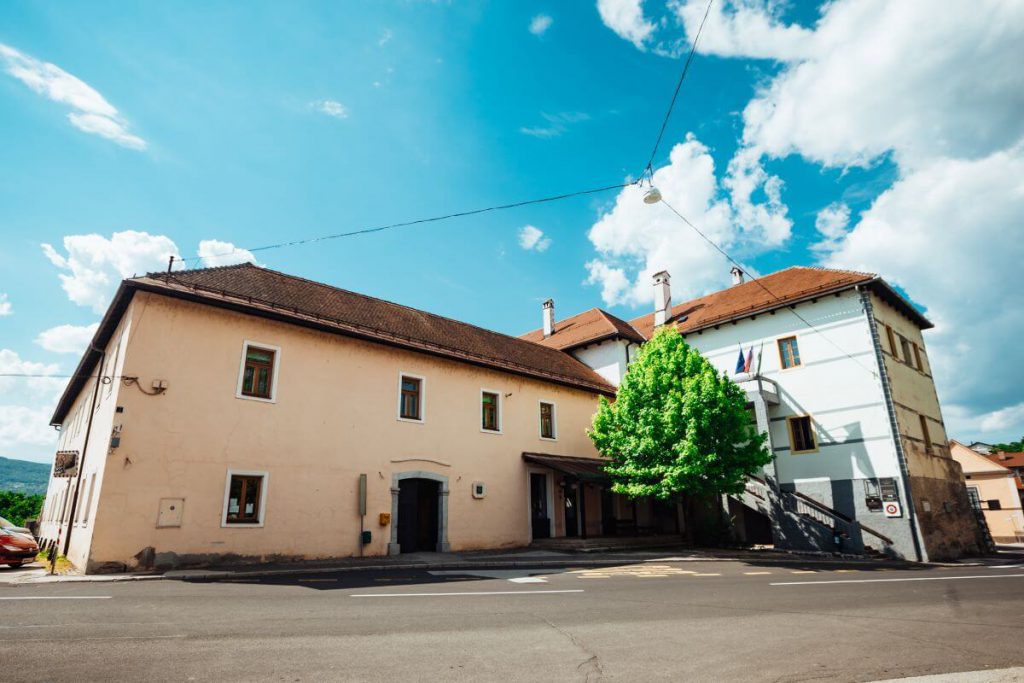
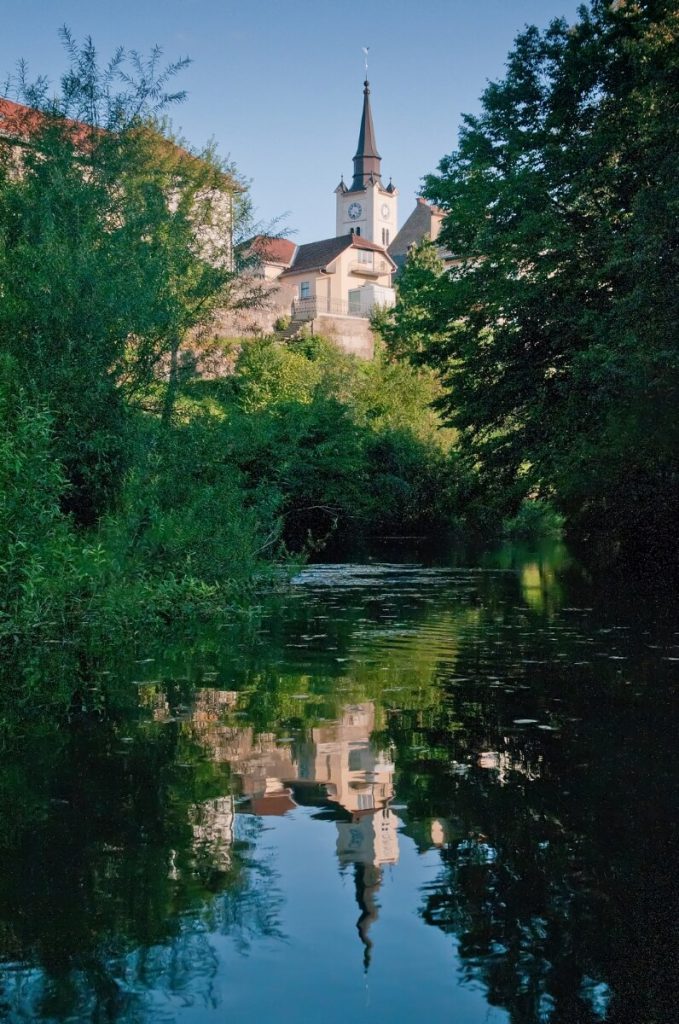
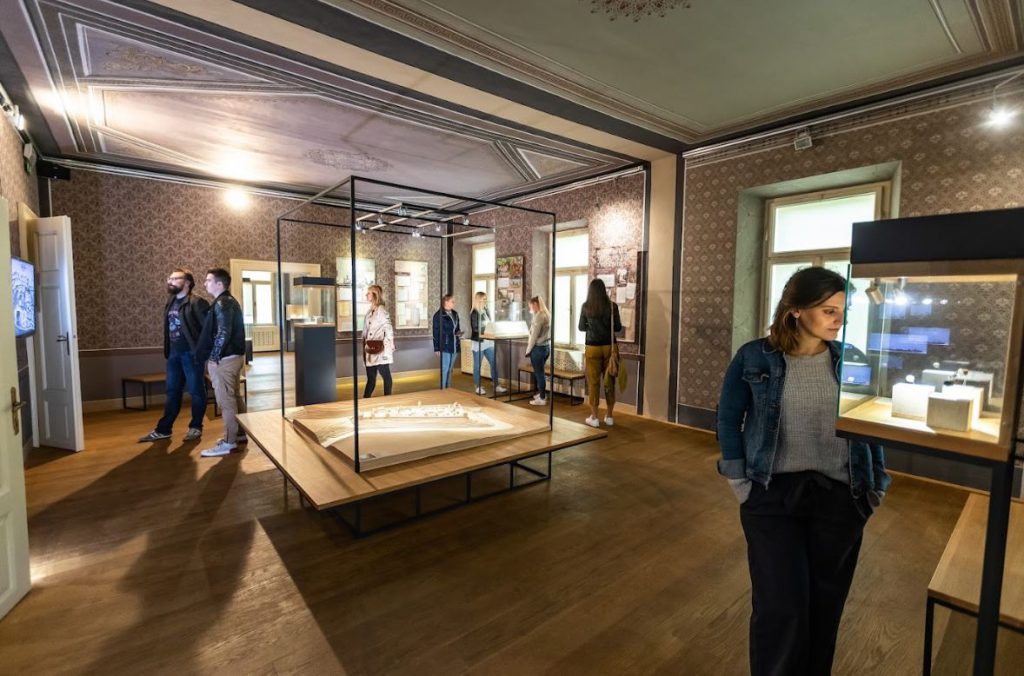
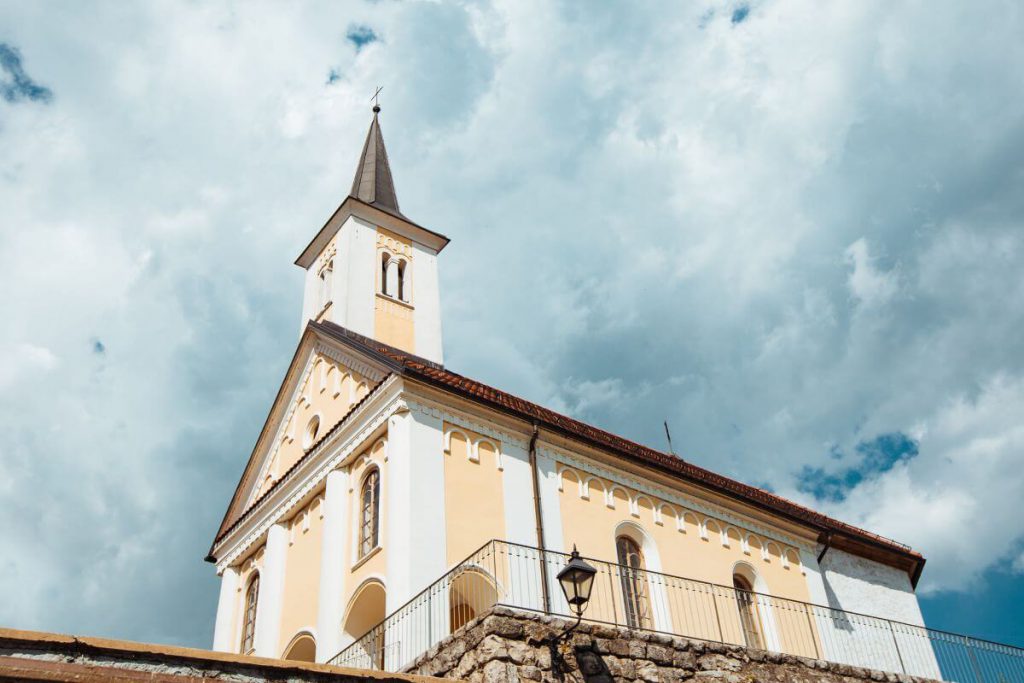
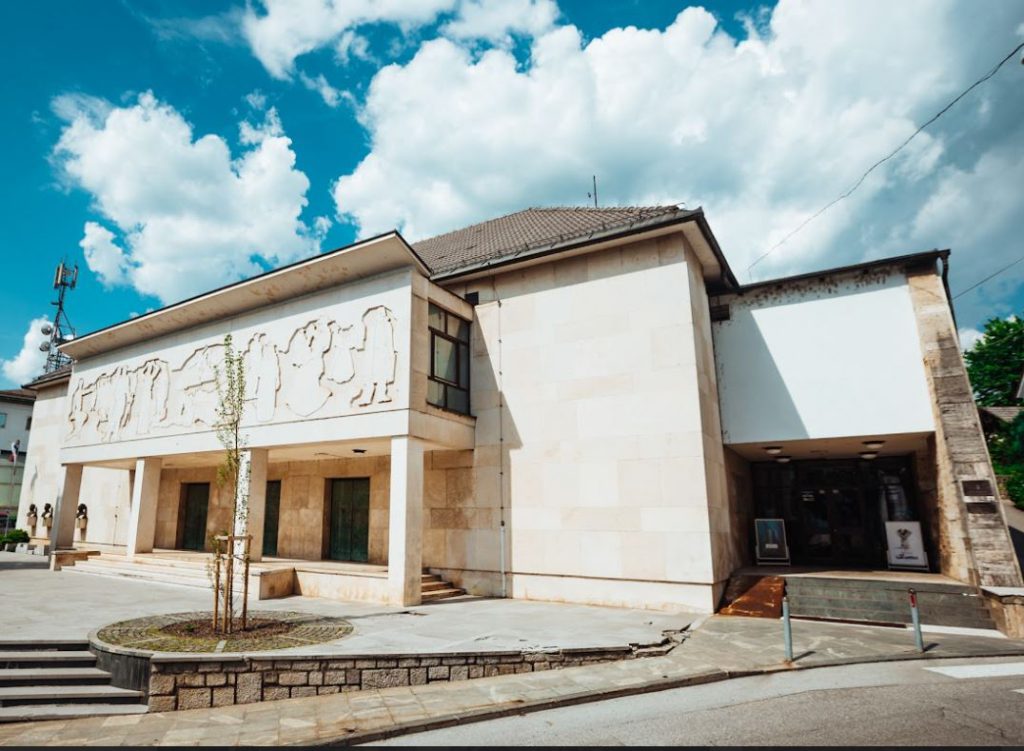
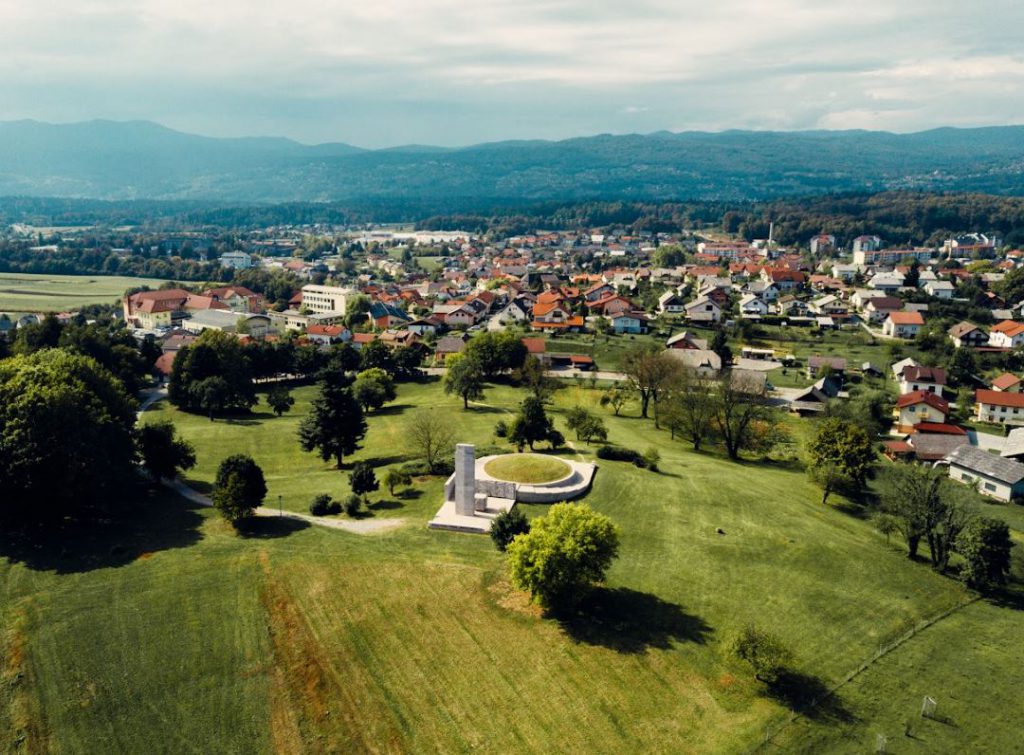
Črnomelj Castle is the oldest and most impressive building in the town dating back to the late 12th century. The rectangular-shaped castle was built on the narrow river bend to control entrance to the town and to defend it. Throughout the centuries, the castle has been rebuilt numerous times and the current building dates from the 20th century.
Savings and Loan Bank – The two-storey building of the Savings and Loan Bank was built between 1898 and 1900. The building is a typical representation of ambitious historic architecture with a rich façade that takes centre stage in the town square.
The Church of St. Peter is a parish church, which was first mentioned in 1228 as the centre of Črnomelj pre-parish. In the mid 18th century, the medieval church was completely transformed in the baroque style. In the late 19th century, its exterior was decorated with typical neo-Gothic elements. The church bell tower makes the town easily recognisable and dominates its silhouette.
The Treasury is located in the basement chambers of Črnomelj Castle. It features interactive and touch screen displays of the natural, cultural and ethnological treasures of Črnomelj and Bela Krajina. The Treasury is an entry point to the region, where tourists can outline their own path to explore the area.
The birth house of Miran Jarc – The building was constructed in 1844 as the first school in Črnomelj on the grounds of the former town hall. Around the year 1897, the building was extended and the tower demolished. All the rooms were richly decorated with various geometric and floral motifs at the end of the 19th century. Today, it houses the Črnomelj Municipal Museum Collection.
The Church of the Holy Spirit was first mentioned in 1487, when the first religious institution was founded there. However, archaeological research uncovered remnants of settlements from prehistoric, ancient and mediaeval periods. Today, the church serves cultural purposes.
Culture Centre, which used to be called the House of the Sokol Movement. The building was built according to the plans of Viljem Treo, an architect from Ljubljana, between 1925 and 1928. In February 1944, a session of the Slovenian National Liberation Council took place in the building and later that year the building housed the first Slovenian National Theatre. In 1954, the architect Branko Simčič modernised the building, while the relief on its façade also from 1954 is the work of the sculptor Jakob Savinšek. The house front also features bust statues of Slovenian national heroes, namely Janko Stariha, Jože Mihelčič, Drago Jerman and Milka Šobar-Nataša. The building is a monument of national cultural importance.
GRIČEK, A HILL OF CONSIDERABLE HISTORY
The old name for the hill overlooking the town was Komendski hrib [meaning commandery hill], because it was the location of a large built cellar of the Teutonic knights, which was the order in charge of the town at the time. The structure was connected to the commandery in the town itself. In the 1670s, the notable Carniolan polymath Janez Vajkard Valvasor stayed at the cellar and sketched his townscape there. The cellar was at least two centuries old when it was demolished in a clash between Črnomelj residents and smaller detachments of Napoleon’s army in October of 1809. A few years later, Austrian Emperor Francis I had a chapel built to commemorate the Austrian victory in said encounter; however, the chapel was demolished at the close of the 19th century, when a cutting nursery was established on the hill.
During World War II, the Italian occupying army set up cannons on Griček to shell national liberation force positions.
In World War II, between 1941 and 1942, Bela krajina lost a whole tenth of its population and so, after the war, the hill above Črnomelj was designated a memorial space. A monument to Bela krajina’s World War II victims was erected according to the plans by architect Marko Župančič. The burial mound holding the remains of the members of the first Bela krajina unit was established in 1950 and sculptor Jakob Savinšek’s monument featuring large reliefs was finished in 1961.

